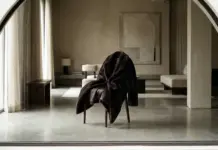Within the textile business, specialty yarns provide a myriad of unique features and capabilities that cater to specific demands and tastes, creating an intriguing environment. Specialty yarns come in a variety of materials and architectures that are suited for particular uses, ranging from high-tech performance fibers to luxury silk blends. Specialty yarns are distinguished from standard yarns by their capacity to provide improved performance properties. Specialty yarns, for instance, may be designed to wick away moisture, which makes them perfect for sportswear and activities where controlling perspiration is essential. In a similar vein, functional yarns are designed to provide certain performance characteristics above and beyond the fundamental uses of textiles.
Unique Yarns
Specialty yarns are designed to provide distinct tactile or visual qualities that distinguish them from regular yarns. High-end, designer, or creative textile items often employ these yarns. These are a few typical categories of specialized yarns:
Boucle Yarn: Has curls or loops along the length of it, giving it a bumpy, textured appearance.
Chenille Yarn: The soft, plush texture is produced by cutting the pile fibers, giving the yarn a velvety feel.
Metallic Yarn: Contains metallic fibers or metal to create a reflective, glossy look.
Slub Yarn: Adds texture and a homemade appearance with its erratic thick and thin portions.
Specialty yarns improve the visual and tactile appeal of textiles and are often selected for their aesthetic qualities.
Blends of fibers for specialty yarn
In order to make yarn that maximizes the advantages of each component, two or more distinct kinds of fibers are combined to form blends. The purpose of the blending procedure is to improve certain qualities like pliability, warmth, strength, or affordability. Typical varieties of yarn mixes consist of:
Blends of cotton and polyester: These materials combine the resilience and softness of polyester with the breathability and breathability of cotton.
Blends of wool and acrylic: Combines the natural warmth and feel of wool with the lightness and low cost of acrylic.
Blends of silk and wool: Provides the structure and warmth of wool with the opulent feel and luster of silk.
Because of their extreme versatility, blended yarns may be made to fit a variety of budgets and performance needs.
Fiber Blends’ Advantages and Applications for Specialty Yarn
Wool Blend: Rich in coziness, tenderness and gorgeous drape. Because of its special structure, wool doesn’t absorb body odor and modal breathes well, making clothing comfortable to wear. Because wool blends withstand fire, UV rays, wrinkles and odors they are utilized in sportswear, accessories, household goods and more.
Acrylic Blend: Provides more durability, vivid colors, and a wool-like feel while adding warmth. Blends of acrylic and cotton are lightweight and cozy, combining the moisture-wicking qualities of cotton with acrylic’s softness. Socks, premium fashion, home furnishings and clothing all employ these mixes.
Miyabi Blend: A fine fiber that produces thin, very soft, and lightweight thermal garments offers extreme comfort, warmth and a silky hand feel used for clothing, high-end clothing, thermal clothing and socks.
Operational Yarns
Functional yarns are designed to provide certain performance characteristics above and beyond the fundamental uses for textiles. These yarns are created with specific uses in mind, often in high-performance or technical domains like industrial usage, sports or medical. Functional yarn varieties include:
Moisture-Wicking Yarns: Composed of fibers that wick moisture off the skin to keep the user comfortable and dry. typical of sports and sportswear.
Antimicrobial Yarns: Containing ingredients that prevent the development of fungus and bacteria, therefore enhancing hygiene and lowering odor used in athletic apparel and medicinal fabrics.
Conductive yarns allow electrical impulses to be sent since they are made of conductive materials like carbon or silver. used in wearable technologies and smart textiles.
Flame-Resistant Yarns: Made from fibers that don’t burn or melt, these yarns are essential for protective gear used in the military and firefighting professions.
Innovative textile solutions often include the use of functional yarns, which improve usefulness, comfort, and safety in certain applications.
Particular Uses and Benefits of Functional Yarn
Using tiny natural particles, cocona/cotton improves cooling and helps athletes maintain their body temperature, keeps energy for warmth in the winter, used in socks and sportswear.
Recrotherm Yarns: With a high degree of hollowness, polyester fibers provide increased warmth and comfort. Fits well with jeans, thermal clothing, casual attire, shirts, suits, sportswear, and socks.
Thermolite Yarns: An insulating fabric with hollow core fibers that is lightweight and strong. Used for sportswear, socks, shirts, suits, leisure wear, and thermal clothing.
Ecovero Yarns: Produced using certified renewable wood sources in an environmentally conscious manner. Used in socks, knitted clothing, children’s clothing, clothing and the medical field.
Coolmax Yarns: Removes moisture from the body to keep the user dry and comfortable. Used for sportswear.
Refibra Yarns: Recycled textiles used in sustainable manufacture. Improved breathability, smooth and mild on the skin. Used in denim, home textiles, formal attire and casual clothing.
Bemberg Yarns: Cotton linter-derived regenerated fiber. Opulent, velvety, cozy and beautifully colored. Used in towels, personal apparel, ladies’ clothing, children’s clothing, and bath suits.
Hemp Blended Yarns: Water-efficient, robust and long-lasting. Improves the strength, stability, color retention and moisture absorption of the cloth. Used in luxury fashion, home décor and clothing.
Unique Designs and Eco-Friendliness in Functional and Specialty Yarns
Specialty yarns not only improve functionality but also have distinct visual characteristics that make them stand out. For example, hand-dyed artisanal yarns exhibit rich, complex colors and subtle variances that give knitted or woven garments depth and personality. Unconventional yarns with unusual textures, such boucle or eyelash yarns, provide visually arresting results that give fashion and home décor projects a sense of mystery and depth. Specialty yarn manufacturing often uses cutting-edge machinery and procedures, which reflects continuous innovation in the textile sector. Modern spinning processes, precise dyeing procedures and fiber mixing technologies let producers make yarns with customized qualities and functionalities. These developments help to provide sustainable and environmentally friendly yarn alternatives in addition to increasing the options available to textile designers and crafters.
Specialty yarns can provide a medium for artistic expression, encouraging designers, craftspeople, and artists to push the limits of conventional textile arts. Specialty yarns allow for experimentation and discovery, whether via sculptural knitting methods, detailed color work, or elaborate lacework. Furthermore, the handcrafted quality present in several specialized yarns gives handmade items a feeling of genuineness and individuality, encouraging a closer connection between the creator and the material.
Specialty yarn demand has increased recently as a result of changing customer tastes and new market trends. Specialty yarns provide a compelling alternative for mass-produced, generic textiles as customers place an increased emphasis on quality, performance, and sustainability when making selections about what to buy. Additionally, the emergence of social media and internet platforms has made specialized yarns more visible and accessible, enabling aficionados to find and get in touch with craftsmen and niche suppliers throughout the globe.
In summary
A vibrant and cutting-edge sector of the textile industry, specialty yarns provide a vast range of distinctive features and capabilities catered to particular requirements. These yarns provide improved performance qualities, such as moisture-wicking and antibacterial qualities, that transcend those of ordinary yarns. They range from opulent silk blends to high-tech performance fibers. Specialty yarns’ aesthetic attributes, such as their distinctive textures and vivid colors, provide clothing and home décor projects a deeper, more intriguing look. Specialty yarn manufacturing makes use of cutting-edge technology and procedures to provide environmentally responsible and sustainable solutions that satisfy changing customer needs. In addition to encouraging creative expression and creativity, these yarns strengthen the connection between producers and the materials they work with. Specialty yarns are becoming more and more popular as consumer tastes change to emphasize quality, performance, and sustainability. This trend is bolstered by greater awareness and accessibility to these yarns on social media and internet platforms.



































